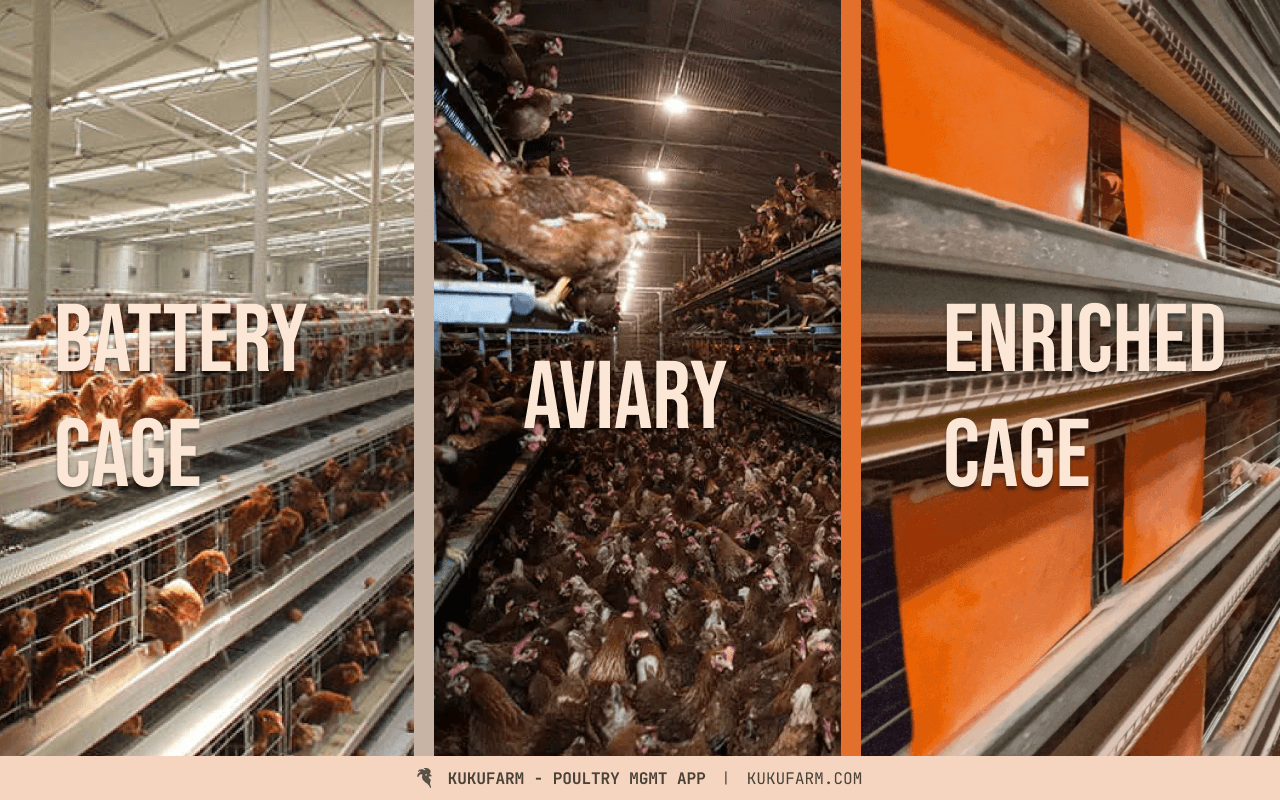In a comparison of egg production rate in 3 poultry systems, the aviary system performed significantly lower. Additionally, it had poorer egg quality in comparison to cage systems.
F.X. Phillippe et. al. conducted a study to compare egg laying habits, egg production rates, and egg quality in 3 poultry system. These poultry systems were conventional cage, aviary and enriched cage.
In this article we do a high level summary of the study by Phillippe et. al. We highlight egg production performance across the 3 poultry systems.
Aviary system highlights
- Egg production rate and egg quality were lower in aviary system
- Aviary system had high rates of mislaid eggs
We have previously done a brief analysis of a similar study by Mathews & Sumner. In our opinion, findings from both studies are closely matched. The two studies agree that aviary systems have lower egg productivity than cage systems.
Study: comparison of egg production rate in 3 poultry systems
Method
The study was done in 12 chambers, each taking 1 of the 3 poultry systems under study. In each chamber was 30 Lohman LSL-Lite hens aged 22 – 32 weeks. Surface area for each chicken was 429, 780 and 1120 cm sq. for conventional cage, enriched cage and aviary systems respectively.

Enriched cage and aviary chambers were fitted with nesting boxes, perching and scratching area. In the aviary system, living surfaces were stacked 3 levels high. Moreover, wood shavings were used as bedding material.
Data collected
Phillippe and co. data collection revolved around egg production rate, egg location and cleanliness, egg weight.
Furthermore they also did a deep egg quality inspection. In effect, they collected data on proportion of each egg component: albumen, yolk, shell, pH, Haugh unit, and color intensity.
Findings
Egg laying habits
In enriched cages, close to 70% of eggs were laid in nesting boxes. In contrast, close to all 100% eggs were laid on litter in the aviary systems.
As a result Phillippe et. al noted that the aviary system had a reduced rate of clean eggs. According to them, both cage systems had a clean egg rate of about 77%. In contrast, aviary system had only about 14% of clean eggs.

Egg production rate
Convention and enriched cage systems had the same egg production rate of about 96.5%. In contrast, the aviary system recorded a significantly lower egg production rate of 70%.
These findings on egg production rate are the same as we found in another study by Mathews and Sumner. In effect, from these two studies, the aviary system has the lowest egg production rate. However, Mathews et. al. found that enriched cage had higher productivity than conventional cage system.
Egg quality
Phillippe et. al. found that egg quality was more or less similar across all 3 poultry systems. However, yolk proportion was lower in the aviary system, while eggs from the conventional cage system had higher shell resistance.
Egg quality
According to Phillippe et. al., egg production rates were closely matched in conventional and enriched cages. In comparison, the aviary system had significantly reduced performance. In particular, the aviary system had lower egg production rate and egg weight. Furthermore, eggs from the aviary system were of lower quality.
Phillippe et. al. suggested that high animal activity in the aviary system may have contributed to a lower egg production rate. However, they noted that this element was not measured in the study.
In conclusion
In spite of these findings, we do not advocate for cage poultry systems.
Generally, cage systems score the lowest in animal welfare ratings. Consequently, in the EU conventional cages were banned back in 2012, and all cage systems face a ban by 2027. Naturally, you can expect other countries to be follow suit sooner or later.

What are your thoughts? Leave us a comment in the section below, and let us know what you think.

